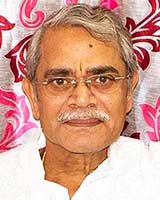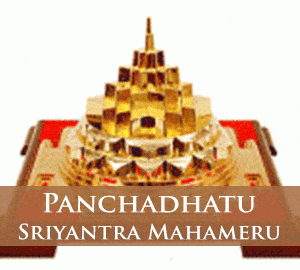Narasimha Saluva had the prudence to charge his trusted general, Narasa Nayaka, who claimed descent from a dynasty which ruled over the Tuluva country, with the responsibility for the administration of the kingdom after him, though he desired that his sons should succeed him. Epigraphic evidence disproves the statement of the Muhammadan historians, and of Nuniz, that Narasa Nayaka murdered the two sons of his master and usurped the throne for himself. In reality he remained loyal to the dynasty of his master. He placed the latter’s younger son, Immadi Narasimha, on the throne, when the elder died of wounds in a battle, though he ably managed the affairs of the State as its de facto ruler. It was only when he himself died in A.D. 1505 that his son, Vira Narasimha, deposed the last Saluva ruler and seized the throne for himself. This “Second Usurpation” led to the direct rule of the Tuluva dynasty over the Vijayanagar Empire. Vira Narasimha is described on some copper plates and also by Nuniz as a pious king who distributed gifts at sacred places.
Vira Narasimha was succeeded by his younger brother, Krishnadev Raya, by far the greatest ruler of Vijayanagar, and one of the most famous kings in the history of India. A gallant and active warrior, he was always successful in the wars that he waged almost throughout his reign. He first turned his attention towards suppressing the feudatories in the central portion of his empire before trying to meet his great rivals in the north. Leaving his headquarters towards the end of 1510, be marched against the refractory chief of Ummattur in Southern Mysore. He was defeated and the fortress of Sivasundram was captured (1511-1512). Other neighbouring chiefs were also reduced to obedience. In 1512 Krishnadeva Raya moved towards the Bijapur frontier and took possession of Raichur. Under the advice of his able and experienced minister and general, Saluva Timma, he did not now invade the Muhammadan territories but turned against Gajapati Prataparudra of Orissa in 1513, with a view to recovering the territories that his predecessors had captured from Vijayanagar during the reigns of the last rulers of the first dynasty. Early in 1514 he captured the fortress of Udayagiri and made prisoners of an uncle and an aunt of the Raja of Orissa, who were, however, treated with honour. By the first half of the next year he had captured the strong fortress of Kondavidu and other fortresses of lesser importance in the neighbourhood, in spite of the fact that the Raja of Orissa had received assistance from the Sultan of Golkunda and Bidar. He took as captives the Gajapati prince, Virabhadra, and some other Orissa nobles. The prince was appointed by him governor of a province, and this fact, remarks Krishna Shastri, “testifies to the high statesmanship of Krishnaraya”. In his third campaign against the King of Orissa, Krishnadeva Raya encamped at Bezwada, laid siege to Kondapalli and captured it. The wife and a son (other than Prince Virabhadra) of the Raja of Orissa and some Orissa nobles and generals fell into his hands on this occasion also. He then advanced north-eastward as far as Simhachalam in the Vizagapatam district and forced his Orissa contemporary to come to terms. The last great military achievement of Krishnadeva Raya was his victory over Isma’il ‘Adil Shah near Raichur on the 19th March, 1520 when the latter attempted to recover the Raichur Doab. He is said to have overrun the Bijapur territory and to have razed to the ground the fortress of Gulbarga. In short, the military conquests of Krishnadeva Raya enabled him to humble the pride of his northern foes and to extend the limits of his Empire up to the South Konkan in the west, Vizagapatam in the east and the extreme border of the peninsula in the south, while some islands and coasts of the Indian Ocean were within its sphere of influence. During the last few years of his life he devoted his attention to the organisation of the Empire in all respects and to works of peaceful administration.
Krishnadeva Raya maintained friendly relations with the Portuguese and granted them some concessions, since, writes Sewell, “he benefitted largely by the import of horses and other requisites”. In 1510 the Portuguese governor, Albuquerque, solicited his permission to build a fort at Bhatkal, which was granted after the Portuguese had captured Goa from the Muslims. The Portuguese traveller, Paes, praises him in eloquent terms: “He is the most learned and perfect king that could possibly be, cheerful of disposition and very merry; he is one that seeks to honour foreigners and receives them kindly; asking all about their affairs whatever their condition may be. He is a great ruler and a man of much justice, but subject to certain fits of rage . . . he is by rank a greater lord than any, by reason of what he possesses in armies and territories, but it seems that he has in fact nothing compared to what a man like him ought to have, so gallant and perfect is he in all things.”
The reign of Krishnadeva Raya not only marked the climax in the territorial expansion of the Vijayanagar Empire, but was also remarkable for the encouragement and development of art and letters. Himself an accomplished scholar, the Raya was a generous patron of learning. He was “in no way less famous”, writes Krishna Shastri, “for his religious zeal and catholicity . He respected all sects of the Hindu religion alike, though his personal leanings were in favour of Vaishnavism. . . Krishnaraya’s kindness to the fallen enemy, his acts of mercy and charity towards the residents of captured cities, his great military prowess which endeared him alike to his feudatory chiefs and to his subjects, the royal reception and kindness that he invariably bestowed upon foreign embassies, his imposing personal appearance, his genial look and polite conversation which distinguished a pure and dignified life, his love for literature and for religion, and his solicitude for the welfare of his people, and above all, the most fabulous wealth that be conferred as endowments on temples and Brahmanas, mark him out indeed as the greatest of the South Indian monarchs who sheds a lustre on the pages of history.” In fact, the Vijayanagar Empire rose, during his reign, to the zenith of its glory and prosperity, when the old Turko-Afghan Sultanate was almost a shrivelled and attenuated carcase and was soon to be swept away by a fresh Turkish invasion.
But dangers lurked for the Vijayanagar Empire in the ambition of her powerful neighbours in the north and in the attitude of her viceroys, two of whom, the viceroy of Madura and the viceroy who was in charge of the central block of the kingdom, rebelled even during the last days (1528 or 1529) of Krishnadeva Raya. The former was brought back to submission before the death of Krishnadeva Raya, but the latter had to be “dealt with only at the beginning of his successor’s reign”.
 Krishnadeva Raya died in A.D. 1529 or 1530 and was succeeded by his half-brother, Achyuta Raya, Krishnadevarayawho, as epigraphic and literary evidences show, was not “altogether the craven that he is represented by Nuniz to have been”. He chastised the rebel viceroy of Madura and reduced to obedience the Raja of Travancore, who had given shelter to the former. But he soon committed the blunder of relaxing his personal hold on the administration, which fell under the control of his two brothers-in-law, both named Tirumala. This irritated the other viceroys, who formed a rival party under the leadership of three brothers, Rama, Tirumala and Venkata, of the Aravidu dynasty, connected by marriage with the reigning Tuluva dynasty. The kingdom was consequently plunged into troubles which continued throughout the whole course of its imperial history and did not cease till it entirely disappeared. After the death of Achyuta Raya in A.D. 1541 or 1542, his son, Venkatadri or Venkata 1, ascended the throne, but his reign did not last for more than six months and the crown then passed to Sadasiva, a nephew of Achyuta. Sadasiva Raya was a mere puppet in the hands of his minister, Rama Raya, of the Aravidu dynasty, who was the de facto ruler of the State. Rama Raya was endowed with ability and was determined to restore the power of the Vijayanagar Empire, which had sunk low after the death of Krishnadeva Raya. One important feature of Rama Raya’s policy was his active interference in the quarrels among the Deccan Sultnates, in alliance first with one and then with another. His enterprises were, indeed, successful for the time being. But these made him over-confident and haughty and ultimately proved to be a cause of disaster for the Empire. In 1543 Rama Raya formed an alliance with Ahmadnagar and Golkunda with a view to attacking Bijapur. But his object was baffled by the diplomacy of the Bijapur minister, Asad Khan, who concluded peace separately with Burhan Nazim Shah and Rama Raya, and thus broke up the coalition. A change of alliance took place in 1558, when Bijapur, Golkunda and Vijayanagar joined against Ahmadnagar and invaded it. On this occasion the army of Vijayanagar alienated the people of Ahmadnagar.
Krishnadeva Raya died in A.D. 1529 or 1530 and was succeeded by his half-brother, Achyuta Raya, Krishnadevarayawho, as epigraphic and literary evidences show, was not “altogether the craven that he is represented by Nuniz to have been”. He chastised the rebel viceroy of Madura and reduced to obedience the Raja of Travancore, who had given shelter to the former. But he soon committed the blunder of relaxing his personal hold on the administration, which fell under the control of his two brothers-in-law, both named Tirumala. This irritated the other viceroys, who formed a rival party under the leadership of three brothers, Rama, Tirumala and Venkata, of the Aravidu dynasty, connected by marriage with the reigning Tuluva dynasty. The kingdom was consequently plunged into troubles which continued throughout the whole course of its imperial history and did not cease till it entirely disappeared. After the death of Achyuta Raya in A.D. 1541 or 1542, his son, Venkatadri or Venkata 1, ascended the throne, but his reign did not last for more than six months and the crown then passed to Sadasiva, a nephew of Achyuta. Sadasiva Raya was a mere puppet in the hands of his minister, Rama Raya, of the Aravidu dynasty, who was the de facto ruler of the State. Rama Raya was endowed with ability and was determined to restore the power of the Vijayanagar Empire, which had sunk low after the death of Krishnadeva Raya. One important feature of Rama Raya’s policy was his active interference in the quarrels among the Deccan Sultnates, in alliance first with one and then with another. His enterprises were, indeed, successful for the time being. But these made him over-confident and haughty and ultimately proved to be a cause of disaster for the Empire. In 1543 Rama Raya formed an alliance with Ahmadnagar and Golkunda with a view to attacking Bijapur. But his object was baffled by the diplomacy of the Bijapur minister, Asad Khan, who concluded peace separately with Burhan Nazim Shah and Rama Raya, and thus broke up the coalition. A change of alliance took place in 1558, when Bijapur, Golkunda and Vijayanagar joined against Ahmadnagar and invaded it. On this occasion the army of Vijayanagar alienated the people of Ahmadnagar.











